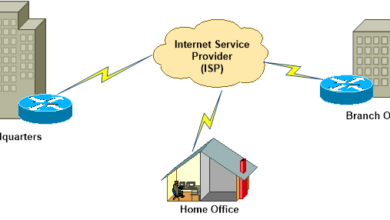Which of the Following is a Best Practice When Browsing the Internet?

In today’s digital age, browsing the internet has become an integral part of daily life. Whether you’re researching, shopping, or connecting with others, it’s important to be mindful of your online safety and browsing habits.
Practicing responsible internet usage not only safeguards your personal information but also enhances your overall experience online. Below, we outline some of the best practices to follow when browsing the internet.
1. Use Strong and Unique Passwords
One of the fundamental principles of internet safety is securing your online accounts with strong and unique passwords. Avoid using common or easily guessable passwords like “123456” or “password.”
Instead, create complex passwords containing a mix of uppercase and lowercase letters, numbers, and special characters. Additionally, consider using a password manager to securely store and generate passwords.
2. Keep Your Software Updated
Outdated software can be a significant security risk. Cybercriminals often exploit vulnerabilities in outdated browsers, operating systems, and applications.
To protect yourself, regularly update your software to the latest versions, ensuring you benefit from the latest security patches and features.
3. Be Cautious of Public Wi-Fi
While public Wi-Fi is convenient, it’s often not secure. Avoid accessing sensitive information, such as online banking or personal accounts, while connected to public Wi-Fi.
If you must use public Wi-Fi, consider using a Virtual Private Network (VPN) to encrypt your data and maintain privacy.
4. Think Before You Click
Phishing scams and malicious links are prevalent on the internet. Always verify the source before clicking on links, especially those sent via email or social media. Hover over the link to see where it leads, and if something seems suspicious, avoid clicking altogether.
5. Enable Multi-Factor Authentication (MFA)
Multi-factor authentication adds an extra layer of security to your online accounts. By requiring a second form of verification, such as a code sent to your phone, MFA makes it more difficult for hackers to access your accounts even if they obtain your password.
6. Respect Privacy and Permissions
Many websites request permission to access your data, such as location, camera, or microphone. Only grant permissions that are necessary for the functionality you need. Review privacy settings on your browser and social media platforms to control what information is shared.
7. Use Trusted Websites and Sources
Stick to reputable websites and verify the authenticity of sources before sharing or acting on information. Look for secure connections indicated by “https” in the URL and a padlock symbol in the browser address bar.
8. Clear Your Browser Cache and Cookies
Regularly clearing your browser’s cache and cookies can improve your browsing speed and protect your privacy. Cookies often store sensitive information, and clearing them can reduce the risk of unauthorized access to your data.
9. Install Reliable Security Software
Comprehensive security software can protect you from a variety of online threats, including viruses, malware, and ransomware.
Choose a reputable antivirus program and ensure it is updated regularly to provide maximum protection.
10. Educate Yourself About Online Threats
Finally, staying informed about the latest online threats can help you identify and avoid them. Follow reputable sources for cybersecurity news and tips, and consider taking online courses or workshops on digital safety.
Conclusion
Browsing the internet responsibly requires vigilance, awareness, and the adoption of best practices. By implementing the tips outlined above, you can ensure a safer and more enjoyable online experience. Remember, the internet is a powerful tool—use it wisely and protect yourself from potential threats. For more Home Internet-related information check the nowinternet.




